Syn.: Glechoma rotundifolia (Benth.) Kuntze, Glechoma thibetica Jacq. ex Benth., Nepeta rotundifolia (Benth.) Benth., Nepeta thibetica Jacq. ex Benth., Phyllophyton tibeticum (Jacq. ex Benth.) C. Y. Wu, Pseudolophanthus thibetica (Jacq. ex Benth.) Kuprian., Pseudolophanthus tibeticus (Jacquem. ex Benth.) Kuprian.
Family: Lamiaceae Martinov
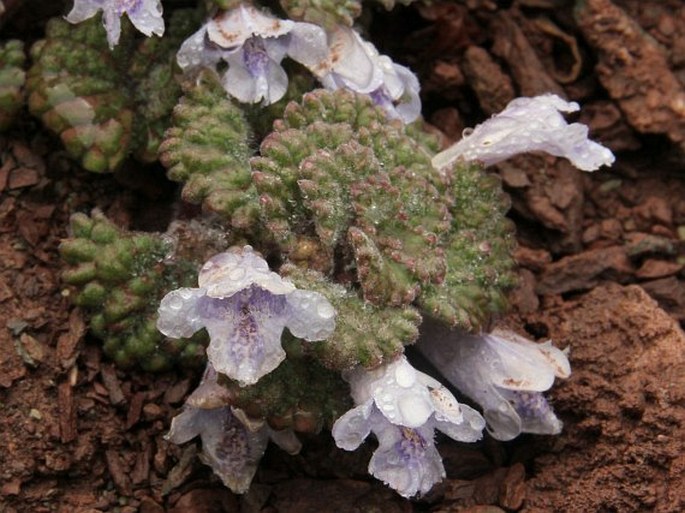
Distribution: Western Himalayan species – Kashmir, western Tibet.
Ecology: It grows in scree habitats in the upper limit of vegetation, at elevations from 4550 up to 5300 m. Blooms from July to August.
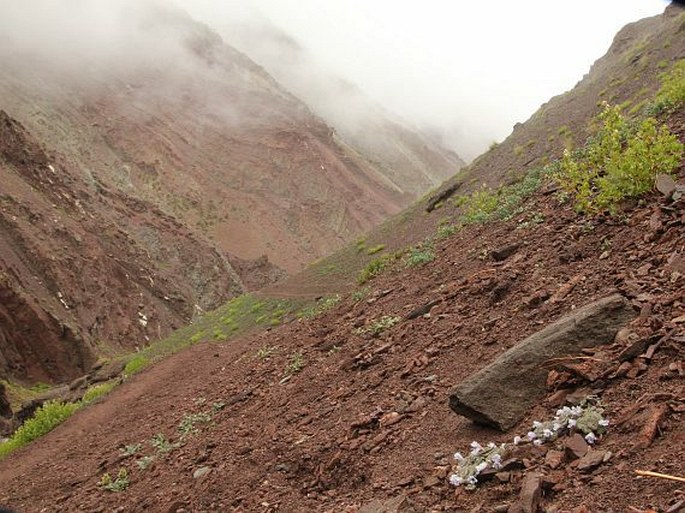
Description: Dwarf perennial herb with a slender rhizome. Stems ascending or procumbent, 5–15 cm long, much branched, purplish, with short white hairs. Leaves imbricate, shortly petiolate, circular or flabellate, 5–8 × 10–15 mm, pubescent, base truncate to cuneate, margin crenate, apex rounded. Flowers few or solitary in leaf axils, sessile; bracts filiform, 6–8 mm; calyx 10 mm, green, villous, slightly bilabiate; corolla white tinged with pink, 20 mm long, with a very slender tube and a narrow infundibuliform upper part; lips very short, 2–2.5 mm. Fruits are nutlets.
Note: The genus Marmoritis contains about 5 species, which occur in China and India.
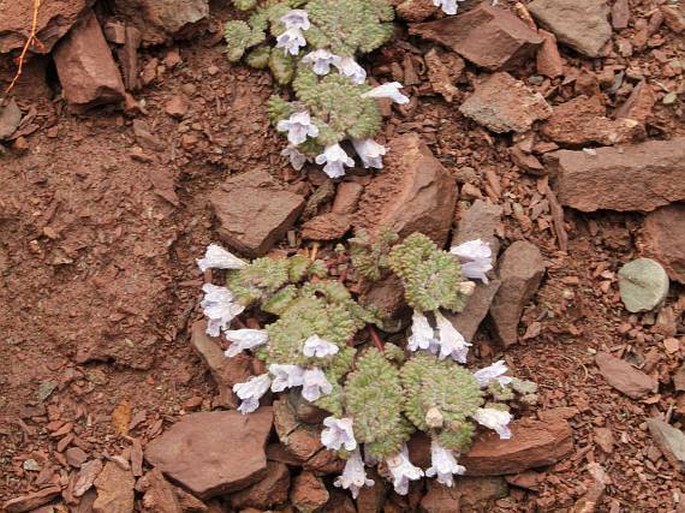
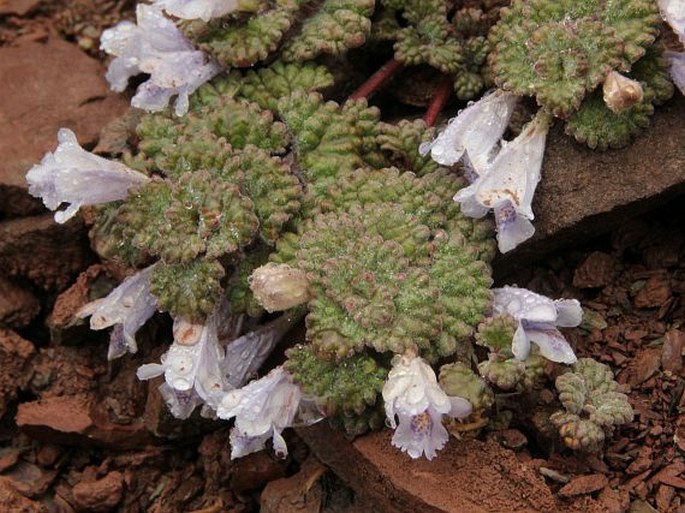
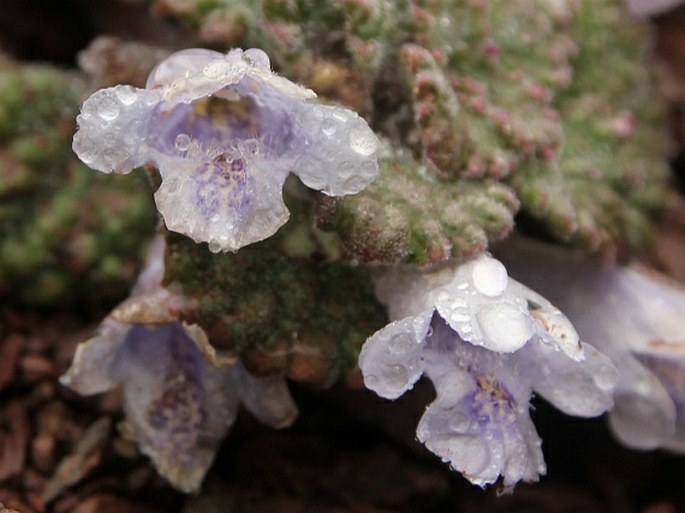
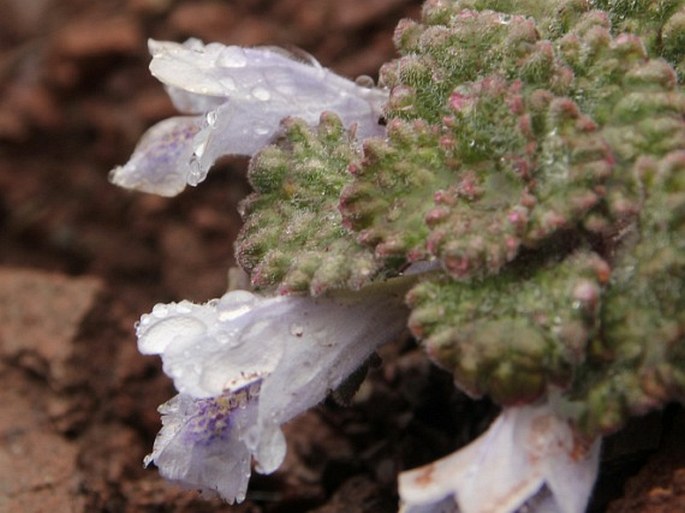
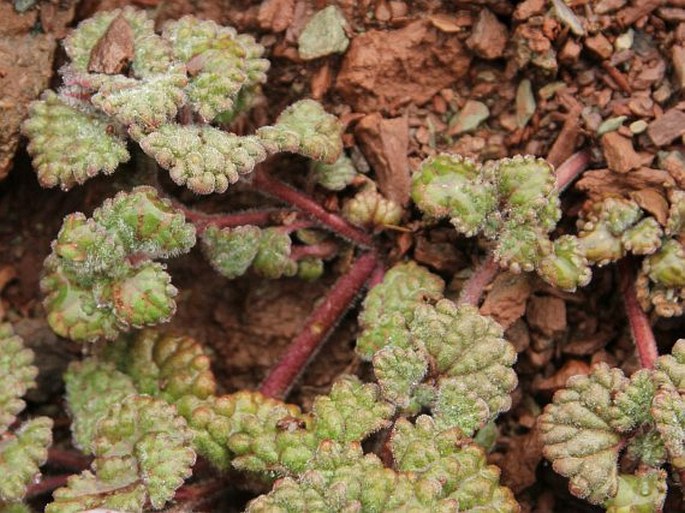
These images were taken in India, Ladakh, Kangmaru La, Lartse (by Jindřich Houska, July 21, 2013).


